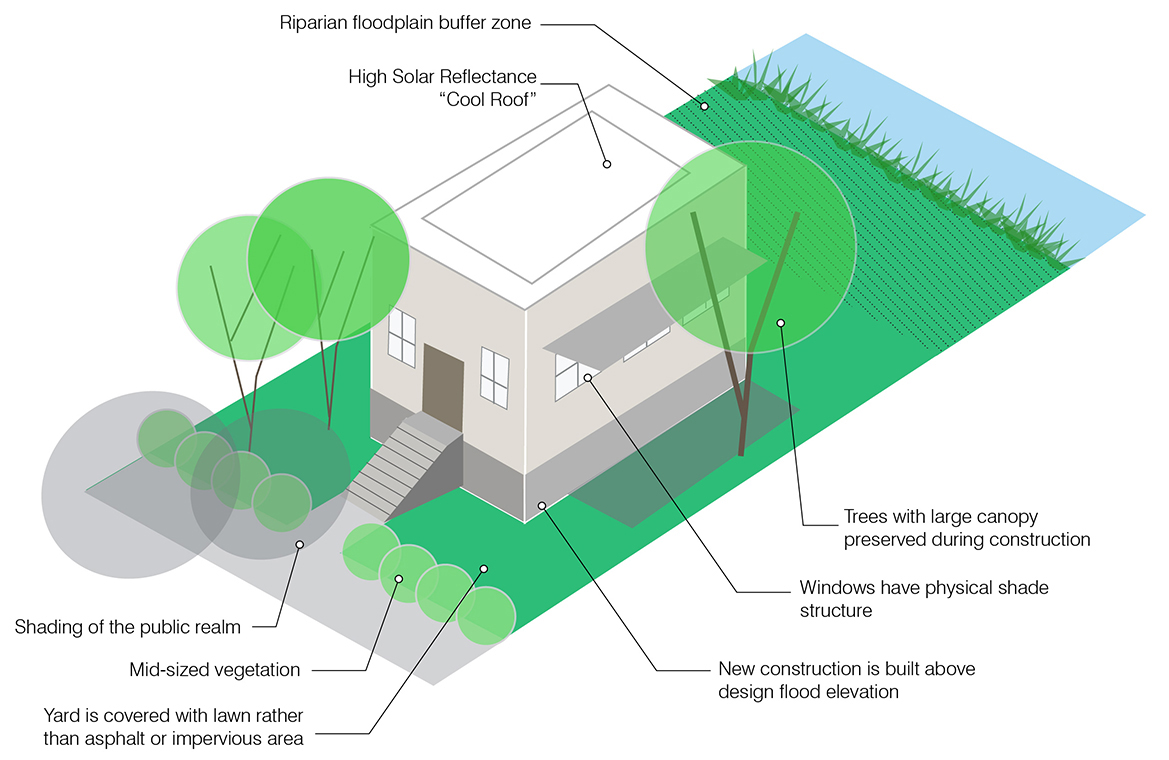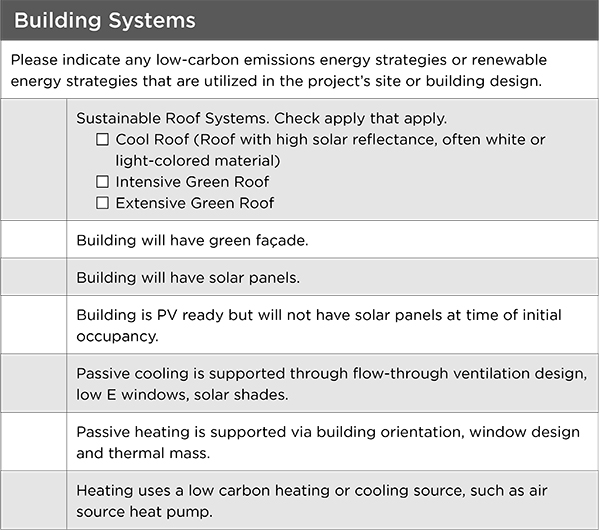Feb. 17, 2023
Regulations are a foundational part of a planner's toolkit. They heavily influence the way our communities look and function by directing where and how we build.
Regulations promote climate resilience strategies
As sea level rise, stormwater flooding, and other climate impacts become more severe, they also have a vital role to play in adaptation and mitigation. Regulations can not only help eliminate barriers to implementing climate-resilient strategies, but they can also promote inclusion of climate resilience strategies into new projects and retrofits.
As planners, we're playing the long game in transforming the approach to climate adaptation — and the journey is just beginning. Whether your community is considering an update of its regulations, evaluating the introduction of some new standards, or considering zoning reform options, your local code offers multiple opportunities for promoting climate action. Here are three proven, practical ways to help ease the process of incorporating climate goals into your local regulations.
1. Audit Your Regulations for POSSIBLE Updates
The first step: Decide what your community's goals are for climate adaptation. Do you want to encourage green infrastructure to better manage stormwater? Limit new development in the floodplain? Reduce urban heat island impacts? Does your community have active net zero goals to meet?
Once the goals are understood, planners can conduct a comprehensive audit. As you read through the code text, consider any edits or additions that would support your goals. Create a table that documents parts of the code that could be updated to eliminate a barrier or support climate adaptation. Once your audit is complete, return to these locations in the code and introduce new prescriptive language. This is an opportunity for creativity within existing regulations.
Take Marlborough, Massachusetts, for example. The city is in the process of updating its regulations to include climate resilience; the new recommended language for their stormwater regulations, seen below in bolded typeface, introduces a prescriptive requirement related to best practices and the use of climate data to inform design:
Ensure adequate long-term operation and maintenance of structural stormwater best management practices through a required Operations and Maintenance Plan so that stormwater structures work as designed. Designs shall consider long-term climate change projections to accommodate increased volume of runoff.
There are a few important things to consider while going through this process. Be careful of adding language that conflicts with other sections of the code or other ordinances. Even if an update might seem like a simple change, cross-referencing other regulations is necessary to ensure that the code works together to achieve your community's vision.
Remember, too, that updating regulations to subtract or add language can become an onerous task, especially if taking a holistic approach and looking at multiple ordinances. Use "Track Changes" in Word and the comments feature to keep track of recommended changes. Updates to the code must be reviewed by multiple departments or even stakeholder groups. By visually highlighting the recommended changes, review is easier, and the original text is preserved.
Finally, consider forming a committee to champion the process. Avoid a one-author approach, which could limit recommendations or acceptance of revisions. A committee will achieve greater consensus if they are included at the onset of the update.
Once the draft update is complete, share your recommended changes with all relevant stakeholders or committees for feedback.

A graphic rendering shows how a project site could be transformed with climate-resilient regulations. Graphic courtesy of the city of Marlborough, Massachusetts.
2. offer Flexible Design Guidance — And Incentives
Your community may be concerned with the enforceability of climate adaptation strategies. In those cases, instead of introducing prescriptive standards, communities can take a gentler approach by expanding site plan review submission requirements. Create a climate adaptation design guidance document or checklist to help project proponents incorporate your strategies into their projects. Consider including a climate impact statement as a part of the checklist; it should include the on-site climate vulnerabilities and how they will be addressed through design and the development process.
By offering design guidance, a community can encourage climate adaptation without requiring or creating conflict with the state building or energy codes. Consider incentives for incorporating strategies on the checklist; for example, for large developments, a community could increase floor area ratio (FAR) or allow an additional unit if a certain number of strategies on the climate resilient checklist are included in the project.

Chelmsford, Massachusetts, uses flexible requirements to increase resilience, with a specific number of strategies required in each category. For building strategies, developers must pick four from the above checklist to incorporate into their designs. Source: Chelmsford, Massachusetts Climate Sustainability Checklist.
One way to wade into new regulations is through the use of a checklist to introduce design strategies that your community wants to encourage. Once the strategies on the checklist become more commonplace in the construction industry — and there is greater familiarity amongst developers — a locality might transition to a mandate.
Consider this example from Chelmsford, Massachusetts, a community that created a "Climate Sustainability Checklist." They encouraged — without requiring — a certain number of strategies based on the size of the project, seen below. The town referred to these designations as "tiers."
3. Implement Performance-Based Zoning
Performance-based zoning requires a certain performance metric for a project while allowing for flexibility in achieving it. This approach can provide a powerful way to achieve goals related to climate impact reduction while still allowing developers or property owners a range of options for implementation.
Cambridge, Massachusetts, is in the process of adopting a "cool factor" zoning ordinance, which requires new projects to incorporate strategies that reduce the urban heat island effect. The cool factor calculates a weighted score based on site features like mature tree preservation, new tree planting, ground-level vegetation coverage, green roofs, shade structures, and the use of high solar-reflectivity paving materials. Aside from one prerequisite — the use of high-solar-reflectivity roof coverings — property owners are given the flexibility to choose which strategies are most appropriate for their project, as long as they meet the minimum weighted score requirement applicable to the site.
This performance-based regulatory approach allows for localized innovation and changes as a community builds new sites. Importantly, built-in flexibility, rather than rigid, prescriptive requirements, tend to achieve greater buy-in from project proponents.
Developing a scoring system can be complicated. Base your metrics on the best available climate vulnerability data and adaptation or sustainability practices, and use existing resources where available to evaluate which strategies should be prioritized with higher scores. Be mindful, too, of the economic implications. If a strategy with a high score is costly, it could be prohibitive to new development.
Finally, be sure to consider how new projects will be evaluated. Does your community have staff with the capacity to understand and review the technical aspects of the ordinance requirements? You might need the support of a peer reviewer or staff training.




